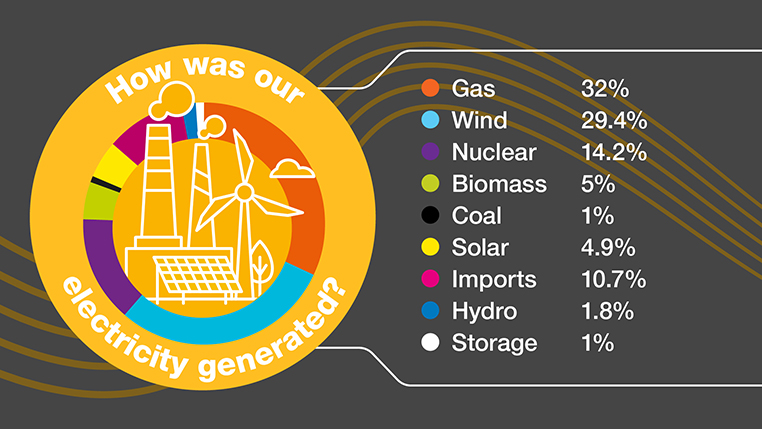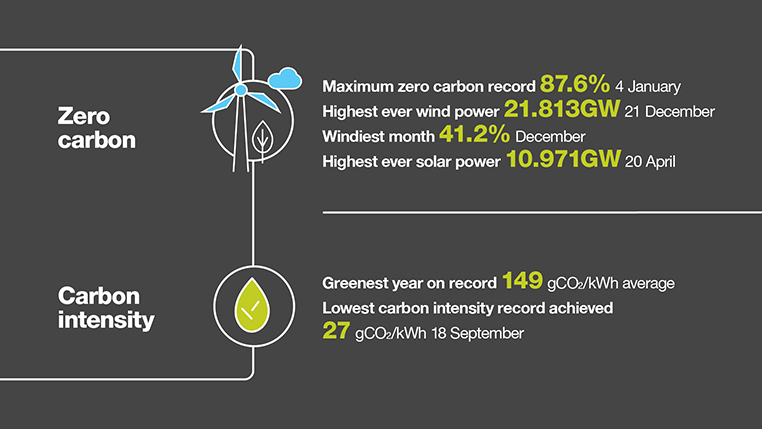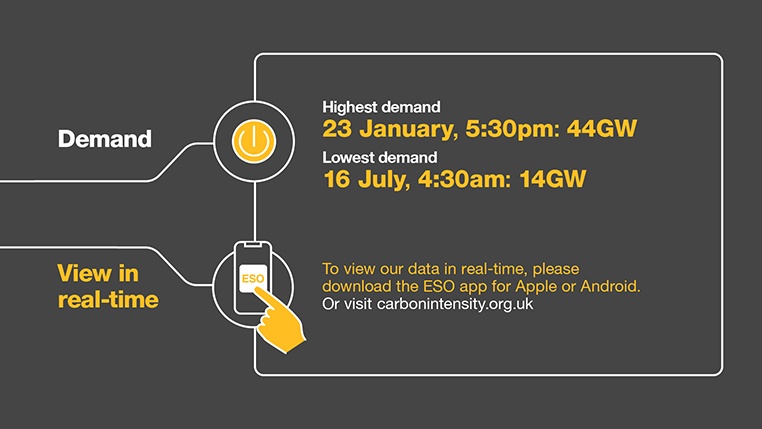Britain's Electricity Explained: 2024 Review
7 Jan 2025 - 2 minute read

We’re moving closer to our ambition of periods of zero-carbon operations by 2025 and hit some significant milestones on our journey last year. Take a look back at how electricity was generated and used across 2023, and some of the notable events through the year.
We broke several records in 2023 as various factors aligned to deliver new wind and solar generation, carbon intensity, and zero-carbon generation records.
Notable records include:

This chart shows the total generation by source, based on Great Britain's monthly electricity stats, which we produce monthly. Follow us on X and LinkedIn to see each month’s generation figure and join the conversation.
Great Britain’s monthly electricity stats
In 2023, gas continued to play an important role in providing most of the electricity across Great Britain, but to achieve our zero-carbon ambitions we must continue to utilise more renewables to generate electricity. In 2023, we hit some vital milestones to achieving this:
Electricity from wind turbines has continued to grow in its contribution to the operation of the national network and accounted for 29.4% of electricity generation. On 10 January we broke the first wind record of the year, with wind generating over 21.6GW, and on 21 December we achieved a new maximum wind record of 21.8GW between 8 – 8:30am.
The highest share of wind in the generation mix was on 19 November between 4:30 — 5am, at 69%.
Across 2023, zero-carbon electricity sources played a vital role in the generation mix, with over 50% of electricity coming from these sources in January, July, and October. Use of fossil fuels continues to decline, with a new low fossil record of 1503MW of electricity being generated on 28 December at 2pm.
In addition to new wind records, on 20 April we achieved the highest ever solar generation record at 10.971GW.
Overall, zero carbon sources outperformed traditional fossil fuel generation in 2023 by providing 51% of the electricity used this year, compared to 32% from gas and 1% from coal stations.

Finally, electricity demand has also fluctuated this year, showing the variation in electricity needs across the year, with electricity demand remaining at its lowest during the summer months, as longer, brighter days reduce the need to light or heat our homes.

If you’re interested in keeping an eye on our generation mix, view our dashboard here and our historic records of the energy mix here.
You can also download our free Carbon Intensity App from the Google Play Store or the App Store to see real time information on how GB’s electricity is being produced.